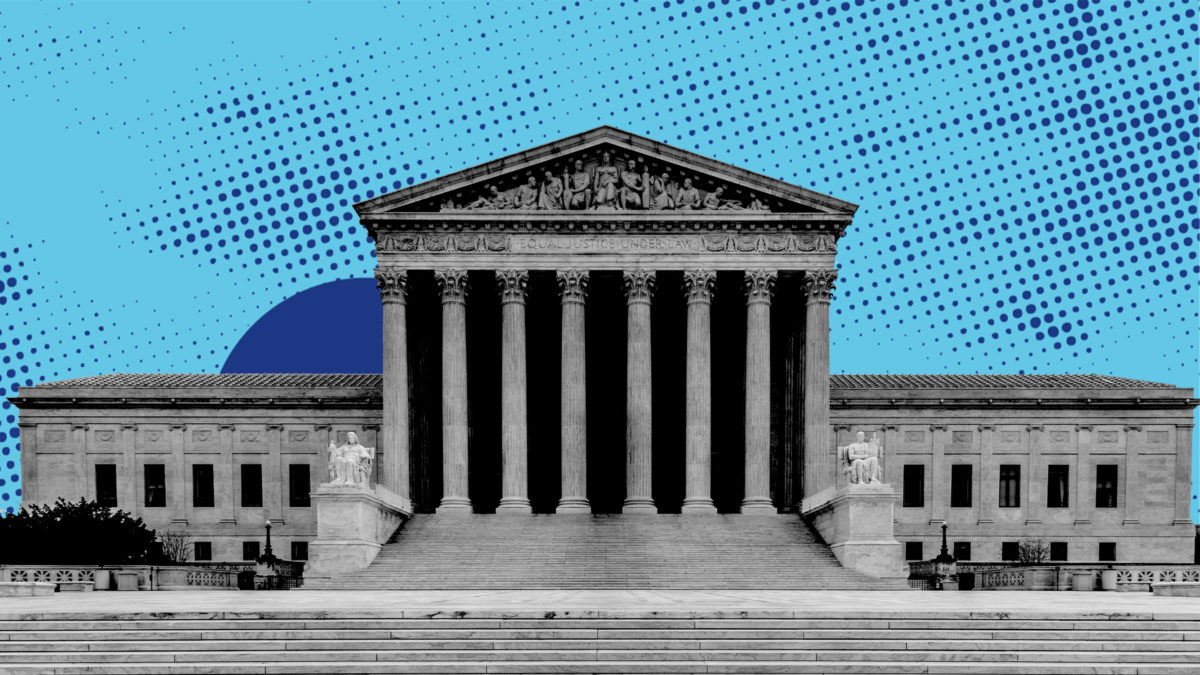“Could a state tell the union, ‘Don’t go on strike except at the end of the day?’” This was one of the questions that Justice Sonia Sotomayor asked at oral argument this week in Glacier Northwest Inc. v. International Brotherhood of Teamsters, a Supreme Court case about whether companies can sue unions for alleged property destruction that occurs during a strike. The question gets at the danger of a sweeping Court opinion that would give employers the power to hold workers accountable for any profit losses that occur during their a strike—which is, of course, the very purpose of going on strike in the first place.
Throughout oral argument, the liberal justices sounded the alarm on how a ruling in favor of the company would imperil the U.S. labor movement. Conservative justices seemed eager to bring about that exact result.
This case is about the early morning events of August 11, 2017, when employees at Glacier Northwest, a ready-mix concrete company in Washington state, went on strike. Days prior, a collective bargaining agreement between the company and its truck drivers had expired, and the two sides were unable to agree on terms on a new one. As the strike was about to begin, drivers returned their trucks to the facility, leaving them running so that the concrete inside wouldn’t dry. No trucks were damaged, although after the company emptied them, some of the concrete hardened, requiring Glacier to throw it away. The strike lasted one week.
The animosity between Glacier and its workers, however, persisted. Shortly thereafter, the company tried to sue the union in state court over that wasted concrete. The Washington Supreme Court turned away the suit, holding that the work stoppage was “protected activity” under the National Labor Relations Act (NLRA), the federal law that protects workers’ right to organize and prevents employers from saddling unions with expensive litigation. The National Labor Relations Board, a federal agency that enforces the NLRA, then issued its own complaint against Glacier, arguing its state court lawsuit against the union was illegal retaliation. The Board is expected to decide the case after a hearing later this month.
This timeline isn’t fast enough for Glacier, though. The NLRB has previously ruled that employees have a duty to take “reasonable precautions” to avoid unnecessary property damage to their employer, and that “intentional destruction of property” is not protected by federal labor law. (As Chief Justice John Roberts put it, this standard excuses striking dairy factory workers for spoiled milk, but does not allow them to kill the cow.) But Glacier is asking the Court to declare the hardened concrete an “intentional destruction of property”—and to let the company take the union to court, NLRB be damned.
NEW: This Supreme Court case could devastate workers’ right to strike.
If wealthy corporations get their way, companies would be able to sue workers for the cost of a strike — like spoiled food, lost revenue, and more.
It would be a massive setback for the working class. pic.twitter.com/IG0fKI4M6F
— More Perfect Union (@MorePerfectUS) January 9, 2023
During oral argument, several conservative justices warmed to the narrative pushed by Glacier’s lawyer, former Trump Solicitor General Noel Francisco, who cast the NLRB as an overreaching federal agency that impedes on state sovereignty. A 1959 Supreme Court case, San Diego Unions v. Garmon, has since required state and federal courts to “defer to the exclusive competence of the National Labor Relations Board” in disputes where organizing activity “arguably” covered by the NLRA is at issue.
For more than 60 years, this broad pro-union rule has kept employers from suing unions in state courts without taking their case to the NLRB first. But on Tuesday, Justice Clarence Thomas asked questions implying his discomfort with this policy, which the Garmon Court created in light of the NLRB’s “specialized knowledge and cumulative experience” in labor matters. “Is there any other case where we have this ‘arguably protected’ preemption?” he asked. When the chance to roll back labor rights is in front of him, Thomas suddenly sees longstanding Court precedent as optional.
Justice Amy Coney Barrett chimed in to express concern over the length of time that state courts have to wait. “It could take the Board a long time to decide a case. Should we take that into account?” she asked. This concern is, at best, misguided: The NLRB typically takes two or three months to decide a case. Given that Glacier’s case has been in the state court system for four years, it’s hard to argue that a few extra months harms Glacier or the state court system or anyone else. Justice Ketanji Brown Jackson emphasized this point during her questioning of Francisco. “Why are we talking in terms of ousting the state court of its jurisdiction even in this regard?” she asked. “If it can go afterwards, we’re not really, at base, talking about Garmon being an ‘ousting’ kind of thing.”
The key issue here is that withholding labor inevitably results in some kind of economic harm to an employer. This is what gives workers leverage in their negotiations for better pay, conditions, benefits, and treatment. By blurring the line between economic harm and “intentional” property damage, the Court could allow many more employers to infuse labor negotiations with the threat of years of expensive litigation. As Justice Sonia Sotomayor put it to Francisco, “You’re saying you as an employee have to continue an employment duty with me until all of my profits are safe.” If unions are required to preserve every cent of their employer’s profits, strikes as a tool of labor organizing would quickly become useless.
Public support for labor unions is at its highest point in five decades. But this Court is a decidedly anti-union Court. In 2018, it decided in Janus v. AFSCME that public-sector unions aren’t automatically entitled to dues from non-union members, depriving these unions of vital resources. Three years later in Cedar Point Nursery v. Hassid, where the Court struck down as unconstitutional a California law that allowed unions to visit with agricultural employees at work as part of their organizing efforts. Despite the public support for labor rights, cases like these have helped push union membership to an all-time low. Glacier Northwest could soon be among them.

